How to Build a Winning Swim Team
Success doesn't happen by accident; it's the result of swimmers and coaches working together to improve swim times and win races. With proper training, swimmers achieve their goals, swim faster, and bring their team closer to winning championships.
Dive head first in this guide to uncover the key ingredients to building a winning swim team.
Chapters
In this guide, you’ll learn how to build a winning swim team through:
- Perfecting Technical Skills
- Effective Swimming Drills
- Successful Practice Plans
- A Variety of Swim Set Examples
- Utilizing SwimSwam
- Finding the Best Swim Technology
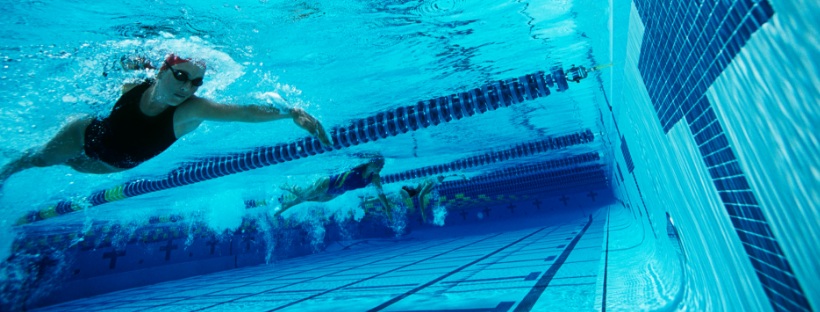
Perfecting Technical Skills
Correct swimming technique is the foundation to fast swimming. Without good technique, swimmers will be swimming inefficiently, which slows down their progress and increases their likelihood of injury. This is true for swimmers of all ages - from younger age groupers, to university level athletes and masters swimmers.
Swimming with good technique is a habit. This means that the earlier a swimmer learns proper technique, the better it will be in the long run, no matter their age. However, it’s never too late to learn how to swim with correct form. Even bad habits can be reformed.
Here are a few tips to promote good swimming techniques for all ages.
1. Get the basics down.
Specific swimming techniques for each stroke will vary, and there isn’t a universal stroke technique that will suit every swimmer. But, there are a few basic elements to good technique for any stroke. This includes:
- Good body alignment. A big indicator of poor technique is poor body position.
- Catch. For any stroke, pulling with a strong catch provides good propulsion while helping maintain proper form.
- Kicks. Just as with the catch, getting in good, strong kicks, pushes swimmers forward while ensuring their lower body doesn’t drop too low in the water.
- Breaths. Getting the breathing just right means no unnecessary head movements that will slow them down or move their body out of alignment.
- Timing. Timing the pulls, kicks, and breaths properly ties everything together, resulting in good strokes.
2. Implement drills
Drills are key to improving and maintaining good technique for any age and any level of swimmer. There are countless drills you can add to workouts, targeting specific areas of each stroke. Find the area that needs improvement, and implement drills to correct or develop that skill. Don’t hesitate to use swimming equipment to supplement drill sets as needed.
Start off slow when applying these changes to regular swimming, and gradually add speed and strength to ensure they don’t lose their form once they start swimming faster with their technique improvements. .
3. Practice consistently
Perfecting stroke technique does not happen after one session. It takes repetition and consistent practice. Some swimmers might catch on and adapt their strokes quicker than others, but it takes at least a few repetitions before it becomes muscle memory and comes naturally every time they swim.
Even after they’ve developed the specific skill you were working on, come back to it every now and then to help them maintain it as you continue working on other areas of their swim, whether it’s through drills or just reminding them to be mindful of it.
For more tips on how to improve your swimmer’s technique, check out this post.
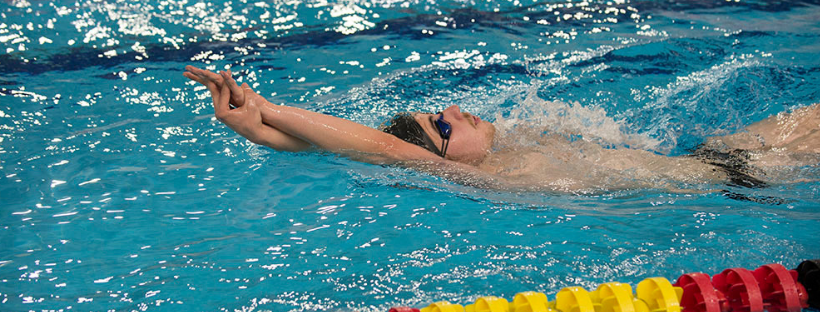
Effective Swimming Drills
Drills are essential sets to add to any swim workout. A large part of maximizing every practice is implementing drills that work to improve your swimmers’ performance. However, not all drills are created equal. Swimmers may also respond differently, and therefore see different results, for a given set of drills.
Ask yourself these questions to determine if your swimming drills have been effective in fulfilling its purpose for your swimmers.
1. Has it improved a specific component of the swim?
The great thing about drills is that they isolate specific areas of a stroke so swimmers can focus on one thing at a time. This enables them to practice certain movements without distraction or feeling fatigue from the repetition.
It typically takes a bit of time and practice for most swimmers to perfect the movement you are trying to correct with the drills. However, if they can’t seem to get it down after repeating the drill a few times, it’s probably a good indicator that it’s time to try a different drill.
This doesn’t necessarily mean the drill is ineffective overall. Every swimmer has their own way of learning, and depending on their swimming style, they might need a different approach to make their improvements.
2. Are the improvements transferred to regular strokes?
The real benefit of swimming drills can only truly be attained if swimmers are able to carry these improvements over to their regular strokes.
Drills are designed to target different areas of swim. Some are targeted towards improving specific metrics like distance per stroke, stroke rate, turn time, or push off strength, while others are specifically targeted towards improving technique and skills.
But, it’s one thing for swimmers to be able to get the movements down when it’s the only thing they are focused on. When you bring back everything else, are they able to maintain what they’ve learned from the drills? And if they are able to maintain the corrections learned, has their swim improved in the way you had planned with the implementation of the drills.
3. What happens when speed is incorporated?
So your swimmers have improved their strokes in large part because of the drills. They practice their new form in moderate sets, and you start seeing these targeted improvements. The challenge for them now is maintaining these improvements even when they’re swimming for speed.
Swimmers sometimes revert to their old strokes once they start trying to swim faster. Again, this doesn’t necessarily mean the drill was ineffective.
If they’re able to swim their regular strokes better because of the drill, being unable to hold it when they incorporate speed likely just means that they need to practice the drill a little more, or try a modified version of the drill. Modifying a drill, supplementing with equipment, or making it more challenging can improve the effectiveness of the drill and help swimmers progress.
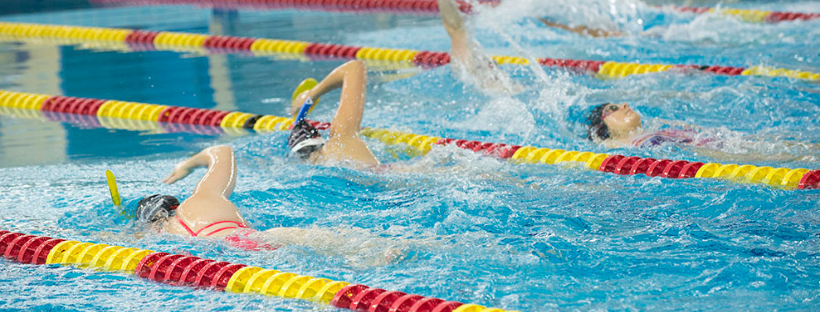
Technique Drills
It is nearly impossible to perfect stroke technique without incorporating drills to training sets. Drills isolate specific movements and enable swimmers to focus solely on getting those movements right and ingraining it to muscle memory. There are countless drills you can implement based on specific goals, with varying degrees of difficulty based on each swimmer's current capabilities.
Here is a rundown of swimming drills for improving technique.
Sculling
Sculling is a great drill for improving a swimmer's feel for the water to maximize propulsion for any stroke. There are different variations of sculling based on the specific area you are working on. 2 common types of sculling:
Front scull - performed face down with arms at the entry position, elbows high sweeping the arms side to side, either in an S or figure eight motion. This helps develop a strong catch.
Hip scull - performed either face down or on the back, arms by the side with the hands by the hips sweeping out. This focuses on the thrust as the swimmer finishes the stroke.
In any variation of this drill, make sure to maintain good body position with light kicks or using a pull buoy and snorkel.
Single arm drill
Single arm drills helps develop proper stroke technique and good balance in the water. By focusing on one arm at a time, it’s easier for the swimmer to improve on the different areas of their pull, whether it’s the catch, the finish, the recovery, or the breath. Only using one arm also challenges them to maintain their balance while stroking.
Variations of this drill could be alternating sides every certain number of strokes (e.g. 3-3, 3-2-1) or switching arms every lap.
Closed fist
The closed fist drill helps develop a swimmer’s pull, from the catch to the finish. It takes away the propulsion provided by the hands, and challenges the swimmer to keep their elbows high and use their forearms to pull. This improves their hold on the water and efficiency of their strokes so they’re not slipping through their pull.
Kick drills
Kicking drills are essential for improving technique for every stroke. Not only does it strengthen core and legs, but it helps improve body position and rotation. Some kick sets you can add to your workouts include vertical kicks, kicks on back, kicks on side, head up kicks without a board, and more.
While drills are more commonly used for improving technique, there are drills for improving different areas of a swim. To learn more about drills that don't work to improve technique, check out this post
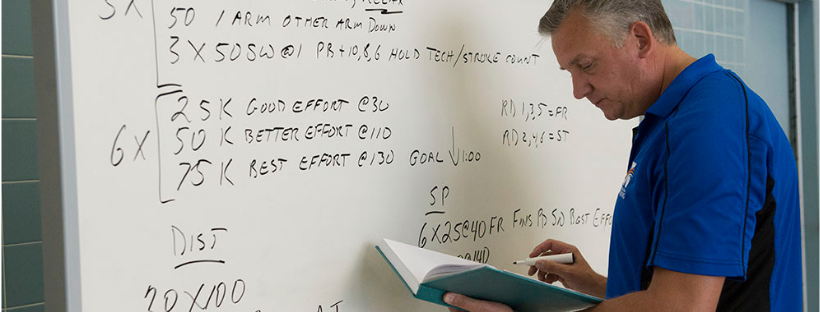
Successful Practice Plans
Being a swim coach means spending countless hours writing, and revising, swim practice plans. After all, effective training plans are essential for swimmers to prevent injury, break plateaus, and improve faster.
Here are the fundamentals of swimming practice plans to guarantee a successful season for your team.
1. Each practice should have a specific objective, based on a periodized plan.
Training should be planned in advance, to progressively build up swimmers’ strengths and capabilities throughout the season. Planning ahead also ensure swimmers are getting the right type or training at the right times.
Periodizing yearly or seasonal training plans structures practices so that swimmers are in peak shape to perform optimally in their races. Periodization divides the training plan into mesocycles, macrocycles, and microcycles. Each training block will have a specialized focus that eventually culminates in swimmers reaching peak performance come championship season.
For this to be effective, the goal for every single practice should be aimed towards achieving the objectives for the training phase you are in.
2. The main structure of each practice should follow a warm up - main set - cool down
Any form of intense physical activity should start with a warm up. This goes without saying, but swimmers don’t always show up on time, or you’re tight on time. No matter what the circumstances of the day, it’s still worth sparing a few minutes to do a quick warm up set.
Not only does warming up prevent injury by properly prepping muscles for higher intensity work, it only helps athletes get a proper feel for their stroke, so they can maximize the efficiency of their main set. Adding drills as part of the warm up, for instance, can set them up for a successful rest of the practice.
The main set will be the primary focus of the practice, and this is where the specific objectives come in. Whether it’s a speed day, endurance day, strength day, etc, these targets would be accomplished through the main set.
Finally, the cool down. It can be tempting for swimmers to leave right after the main set, once their primary training objectives have been complete. But, a proper cool down that gets their heart rate back to normal levels and release any lactic acid build up in the muscles shouldn’t be skipped. This will help them recover quicker in the short term and help prevent injury in the long run.
3. Practices should have just enough variation throughout the season
Swimming, by its nature, is a repetitive sport. However, this doesn’t mean that practices should also be repetitive. Swimmers could lose interest quickly and plateau when swim sets are too monotonous. With the right type and right amount of variation between workouts, swimmers can progress and develop their skills further with every practice.
This goes back to having a periodized plan for the year or season. While your team may have 1 or 2 major goals for the season, the practices leading up to championships should focus on specific components, working on different training zones within given time frames. This means varying the workouts day to day, week to week, month to month.
For even better results, workouts should be tailored to each athlete’s personal goals and capabilities. Fine tuning practices plans for individual swimmers doesn’t necessarily require completely different workouts between swimmers. Slight set modifications usually suffice.
At the same time, it’s crucial to be mindful with changes in training distance and intensity. While training varies and builds up progressively as the season goes by, make sure the changes in training load happen gradually, so that athletes aren’t pushed too hard and too fast. When training load changes too quickly, swimmers’ injury risks increase, jeopardizing their health and success for the season.
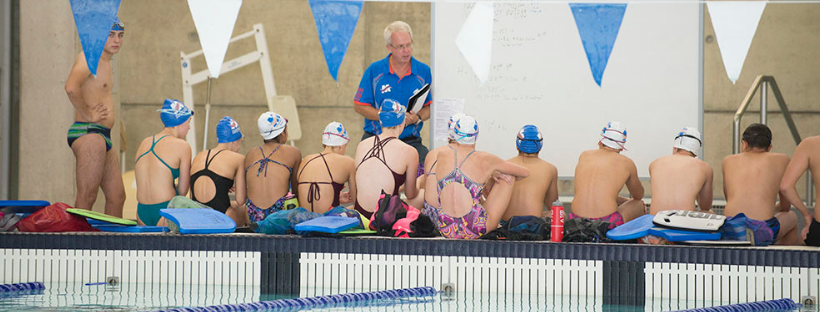
Maximizing Workouts
Training time is precious. Swimmers are in the water for hours a day, multiple times a week, and often, even that doesn’t seem like enough to get in all the necessary work to help them swim faster.
One thing that sets winning swim teams apart from the rest is they are able to maximize efficiency of every swim practice, making sure that every workout counts.
Get the most out of your swim workout sets at every practice with these 4 tips.
1. Have a long-term plan
Whether it’s an annual or a seasonal plan, it’s always best to map out your training plan before the season/year starts. Come to each practice prepared with a workout that serves to bring your swimmers, and your team as a whole, closer to reaching your goals.
When you have a longer term outline for your training, you can implement workouts that enable swimmers to properly build on their current swimming capabilities, instead of executing workouts that might keep them stalled, or worse, increase risks of injury.
2. Set training targets for your team, and have your swimmer do the same for themselves
For every session, set micro-level training goals for your team. Stay focused on specifics. It could be accomplishing certain objectives for workout sets, like improving their endurance, sprints or technique, or maybe it's having swimmers reach target times for a set. The main idea is to have smaller everyday goals, that will keep things moving along towards the longer term big picture goals.
Encourage your swimmers to set personal targets to focus on in each workout. This way, they remain mindful of their swimming, learning to conquer tough sets and stay accountable to their training.
3. Provide constructive feedback
It’s not always possible for swimmers to know exactly what is going on in their swim. They can have a feel for their swim, and make judgments based on their times, but at the end of the day, a coach’s feedback is extremely valuable for improvement.
Provide guidance on specific changes they can make to improve and explain why. Promote open communication between yourself and your swimmers. Encourage them to ask questions and be more involved in their training. When they gain a deeper understanding of their performance, they will be able to effectively apply these insights to future swimming sets.
4. Track progress
Keeping track of your team’s progress is one of the best ways to know if your swim workout sets have been effective. Have their times been improving? If you have access to more data, have a deeper look at how they are progressing based on metrics like DPS or stroke rate.
A large part of getting the most out of swim workouts is knowing how to tweak them to better suit the needs of individual swimmers. Identify what works for your swimmers and what doesn’t, to determine if you need to make adjustments to your training plans moving forward.
Check out this post to find the best swim workout sets to add to your workout.
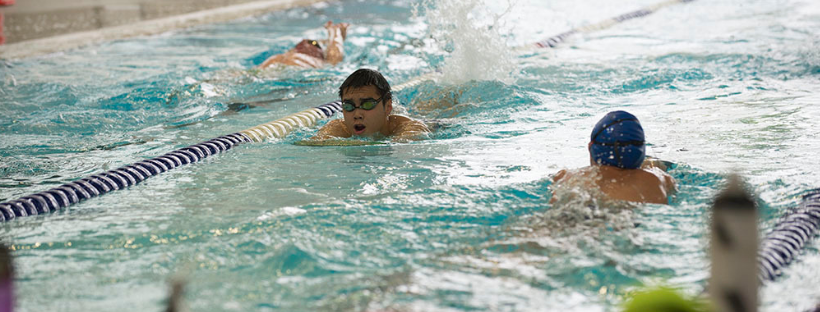
Swim Practice Set Examples
Effective swim sets are key to making sure every practice serves to bring your swimmers closer to their goals. And, with the number of practices you have in a season, you’ll need a good variety of sets to target different areas of a swim and prevent workouts from being too monotonous.
Add these 4 swim sets to your practices to guide your team towards a successful season.
1. Kick Sets
Good kicks are absolutely essential to fast swimming. Not only do kicks play a critical role in improving propulsion of strokes, but they also increase swimmers’ acceleration during the underwater phase off the blocks or walls.
Powerful kicks help provide good amounts of speed right from the start, but when swimmers start to fatigue, the legs are usually the first to go. Training the legs well ensures swimmers can maintain strong and fast kicks throughout the entire distance of their races.
For swimmers to properly develop good kicking technique, power, and speed, kick sets need to be incorporated into workouts.
These sets could be vertical kicks, sprint or distance kick sets, done with or without kick boards or fins, or a combination of these throughout the season. The important thing is that kicks don’t become neglected, and swimmers get in a good amount of leg work.
2. Drill Sets
Every swimmer - from beginners to high performance athletes - can benefit greatly from implementing drills to their workouts. Whether the drills are meant to improve technique or develop certain metrics like distance per stroke or stroke rate, swimmers in all levels need to be doing drills if they want to swim faster.
Technique focused workouts that focus heavily on drills usually occur early in the season, to lay the groundwork and build a solid foundation for good strokes. This sets swimmers up for success once more speed, strength, and endurance work come into play.
In the middle of the season, when training is at peak intensity and swimmers have their technique perfected, it’s still a good idea to add in drills. Drills can be part of the warm up, so swimmers can get their feel for their strokes before the main set, or they can be done for maintenance, so they don’t lose their technique as the season progresses.
3. Sprint and Long Distance Sets
Every team has a group of sprinters and distance swimmers, typically doing different workouts at practice.
For the sprinters in the team, most of their training would revolve around sprint sets - shorter distances, at higher intensity, training their fast twitch muscle fibres to react quicker, and improving speed and power right off the blocks.
Meanwhile, distance swimmers really have to put in the miles, significantly longer sets at lower intensity than the explosive sets sprinters do to build their endurance and train their ability to maintain their pace throughout the entire distance of their races.
2 of the most common types of sets work for either group of sprinters and distance swimmers, but with variation between them based on specific goals for the practice: descending sets and build sets.
Descending sets ask swimmers to complete each rep faster than the previous rep. For instance, descending sets for sprinters could be something like an 8x50, descend 1 to 8, where they have to swim faster on each 50. For your distance group, it could be an 8x200 descend 1 to 4, 5 to 8, where they swim each 200 faster until the 4th rep, and start again from a slower pace on the 5th and descend to the 8th.
Build sets ask swimmers to increase their speed as they complete the distance. In the sprinters’ 8x50, for instance, swimmers will start slow, and gradually speed up to a fast finish in every 50. The same goes for the distance swimmers’ 8x200, where they would build their speed through each lap of the 200.
4. Test Sets
Test sets are an essential component of successful training plans. They measure swimmers progress throughout the season, and helps determine how well they are staying on track of their targets.
There are different types of test sets depending on which component of a swim you are trying to gauge. The key is to have a specific purpose for every test set, and that every test results in actionable insights to guide and improve training plans moving forward.
Common types of tests you can implement regularly throughout the season include aerobic, anaerobic, lactate, technique, efficiency, strength, and power.
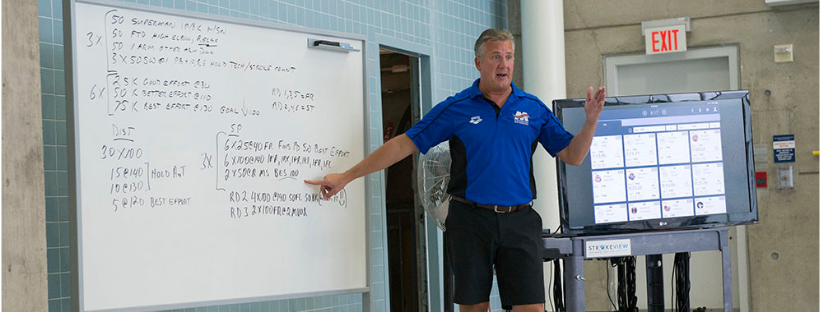
A Go-To List of Sets
Swimmers need variety in their workouts, even when they’re focusing on specific areas at a time. When you’re in need of ideas to spice up your workouts, use this list of swim practice sets for inspiration - or implement them as is!
1. Sprint Sets
Josh Schneider’s favourite sprint set - this set was designed by Cincinnati Bearcats swimming coach Mandy Commons-DiSalle to improve the 2nd half of a 100 race, as posted in Your Swim Book
6 to 8 rounds of:
- 2x50 all out @ 1 min (1st 50 from a dive, 2nd 50 from push off)
- 3 mins. rest between rounds
3x50 all out from a dive, with 3 mins. rest between each 50
2. Distance Sets
Broken Swims set - this is an endurance-based set mixed with speed, from Ironman coach Matt Dixon.
Warm up and pre-set
- 10 min non freestyle on every 4th lap
- 2x200 + 2x175 + 2x150 + 2x125 + 2x100 + 2x75 + 2x50 + 2x25, where odd reps are easy, even reps are build
Main set
- 200 easy + 2x100 fast (the intervals for the fast sets should give swimmer 3-5 seconds rest)
- 300 easy + 3x100 fast
- 400 easy + 4x100 fast
- 500 easy + 5x100 fast
3. IM Sets
The Kansas IM set - University of Kansas coach Clark Campbell designed this set to help swimmers start fast, maintain speed in the middle, and power through to the end. This set was originally posted in Your Swim Book’s 33 Epic Swimming Workouts
4 rounds (1 stroke per round) of:
- 4x25 @ 30 sec., 100 pace minus 1 sec. with fins
- 15 sec rest + remove fins
- 3x50 @ 1 min, 200 pace
- 2x25 @ 25 sec, 100 pace
- 100 easy
4. Kick Sets
High Intensity Kick Set - This is a descending ladder kick set, from Commit Swimming Set of the Week, designed to help swimmers sustain fast kicks through the end of 100 and 200 races.
All kicks
- 4x100 @ 1:50 (last 25 fast) + 4x25 @ 45sec (all out)
- 3x100 @ 1:50 (negative split) + 4x25 @ 40sec (all out)
- 2x100 @ 1:50 (last 75 fast) + 4x25 @ 35sec (all out)
- 1x100 @ 1:50 (all out) + 4x25 @ 30sec (all out)
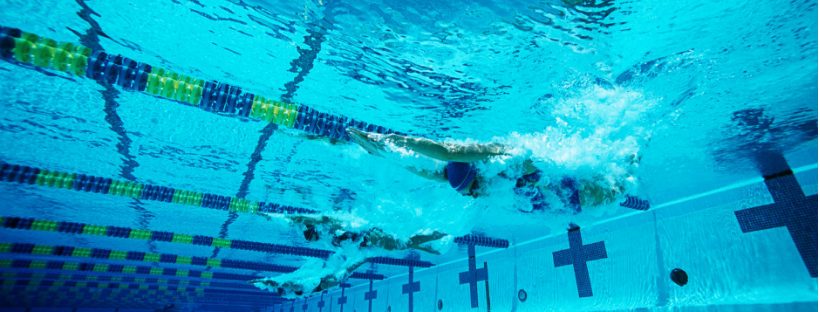
Lactate Production Swimming Sets
Lactate production training promotes fast sprint swimming. When it comes to sprinting, swimmers use intermediate energy sources produced by the anaerobic system. The anaerobic system activates the fast twitch muscle fibres needed for high intensity and explosive activities, such as swim sprints, and starts to break down glycogen without oxygen. This provides an immediate source of energy, but also produces lactic acid.
Lactate production sets are designed to increase the rate of anaerobic metabolism, improving the body’s ability to create and release energy quickly. They also increase the quantities of CP and ATP stored in the muscle, energy sources that provide that quick burst of energy necessary for sprinters.
Simply put, lactate production sets train swimmers to go fast. They improve swimmers ability to swim harder and at a faster speed, from the very start to end of sprint distances.
Lactate production swimming sets are shorter distance, typically around 25-50 yd/m of fast rep, with long rest intervals in between each fast rep, to give sufficient time for lactic acid removal in between each rep.
Generally, athletes can repeat the sets as long as they are able to maintain their times. Once they fatigue and slow down, they should stop the set or take longer rest in between sets. Otherwise, they may go into acidosis, where lactic acid is produced at a faster rate than it is cleared.
This is counter productive to the purpose of lactate production training as acidosis slows down the rate of anaerobic metabolism. Severe acidosis shifts the training into lactate threshold; while lactate threshold training is essential to a seasonal training plan, it trains a different energy system altogether.
Ernest Maglischo provides great guidelines on building lactate production sets in his book Swimming Fastest. Here is a summary of it:
- Set length: 300 to 600 yd/m, can be performed several times in one session
- Rep distance: 25 to 50 yd/m
- Rest intervals: 1 to 3 mins (25yd/m) and 3 to 5 mins (50yd/m)
- Speed: near maximum, within 1 to 2 seconds off best time (25yd/m) and 2 to 3 seconds off (50yd/m)
Check out this post on the 8 best lactate production sets to add to your training.
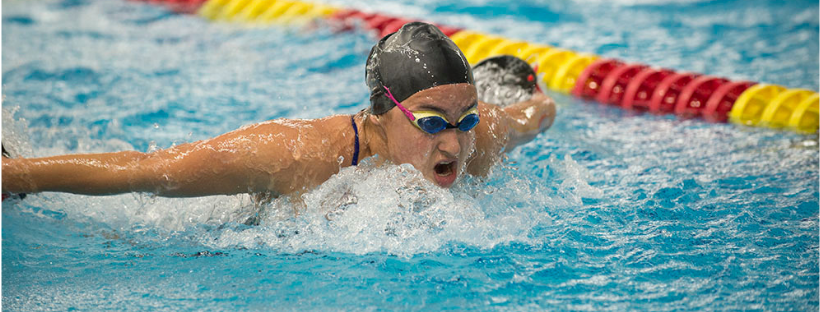
Elite Swim Team Workouts
Swimming workouts can be a hit or a miss. Well designed workouts help swimmers improve in specific components of their swim, which then translate into better overall performance. Check out these swim team workouts written by world-class coaches, to try out in your next practice.
1. Lucky number 8
This endurance workout was crafted by Ironman coach Matt Dixon. The workout is intended for triathletes in their pre-season, but it’s a great addition for any swimmer training for endurance. The sets are a combination of speed and endurance, helping to build a solid foundation for the swim season.
The workout is as follows:
Warm up:
- 10 min. easy
Pre set:
- 16x50 descending every 4 (4x50 easy, 4x50 moderate, 4x50 moderate/fast, 4x50 fast) with 10 sec. rest
Main set:
- 800 pull, moderate
- 8x100 decreasing intervals from 1-4 (@1:40, 1:35, 1:30, 1:25, 1:40, 1:35, 1:30, 1:25)
- 4x200 descending 1-4 (4th is race pace)
- 8x50, odd reps fast @ 45 sec, even reps smooth @ 1 min
- 16x25 @ 25 sec (easy/build/fast/fast)
2. Butterfly sets from coach Bob Bowman
These 2 butterfly sets, posted in this ebook on epic swimming workout was crafted by Michael Phelp’s coach, Bob Bowman. Phelps himself swam these sets to train for powerful finishes in the 100 fly.
This first set is designed to develop speed and endurance, while maintaining technique, in the 2nd half of the 100.
30x50 @ 1:30, broken down as:
- 10 rounds of 3x50 (all out swim, drill, kick)
This second set is designed to produce lactic acid, training swimmers to adapt to it and perform better in the final metres of the 100.
10x50 max
- 4x50 @ 1:30, each rep following are @1:20, 1:10, 1 min, 50 sec, 40 sec, 30 sec
To clear the lactic acid and train athletes to metabolize them better, follow this set with:
- 10x100 freestyle, at an interval with 20 sec. rest
These 2 sets were originally intended for butterfly, but can be adapted for any stroke. All too often, swimmers start their 100m races strong, but are unable to maintain their speed once they reach the 50 mark. These sets are meant to help swimmers develop their capabilities to power through their races from start to end.
3. Kick Sets from Mesa Aquatic Club
These kick sets, posted in Your Swim Book, came from Mesa Aquatics Club’s Paul Smith. Good kicks are critical to faster swimming speed, and Mesa Aquatic Club considers kicks as the 5th stroke. As such, they incorporate at least one kick set at every practice. Here’s a kick heavy workout from MAC
Warm up:
- 4x75 @10 sec rest (25 drill, 25 swim, 25 kick no board w/snorkel)
- 8x50 @1 min (odd reps build swim, even reps fast underwater kicks to 15m)
- 4 rounds of 4x25 @40 (rounds 1-3 swim, round 4 kick no fins)
Main set 1:
- 4 rounds of 3x75 (75 kick @ 1:00, 75 non-free swim @ 50 sec, free swim)
- 30 seconds rest
- 100 kick for time no board
- 300 easy swim or pull w/snorkel
Main set 2:
- 4 rounds of 3x25 w/fins and paddles @40 sec, 30 sec, 20 sec (3-5 dolphin kicks off the walls)
- 30 seconds rest
- 50 kick for time, board and fins optional
- 300 easy swim or pull w/snorkel
- 10 min kick w/board, fins optional
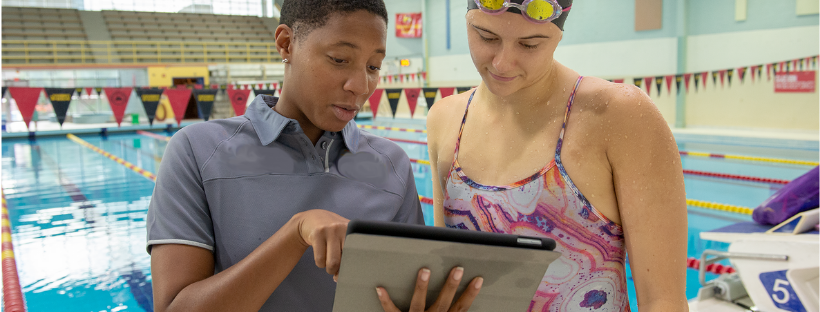
Utilizing Swim Swam
Swim Swam is one of the most well known swimming new sites in the world, and with good reason. With their large collection of articles and videos easily accessible, Swim Swam is a reliable resource available to anyone looking to improve their swimming skillset and stay informed on all things swimming. Even seasoned coaches can find value in checking Swim Swam’s website regularly.
Here are 3 ways to use Swim Swam to become a better coach.
1. Read up on training articles
Aside from their own writers, Swim Swam posts articles written by guest contributors. This provides a wide selection of swimming articles with different perspectives from a diverse group of writers. Having access to this kind of resource is a great way to learn new strategies and techniques for better coaching.
For instance, there are various articles with tips on helping your swimmers improve different components of their swim such as technique, speed, kicks, race strategies, etc. You can find sample drills, sets, and dryland workouts you could implement to your own training plans. And so much more.
Whether you’re looking to improve efficiency of practices, learn or discover more effective swimming techniques, or find ways to better support your athletes, you’re almost guaranteed to find an insightful article on Swim Swam.
2. Keep up to date on competition results
Swim Swam covers most major US meets as well as international competitions. They provide full recaps of races, with a play by play of the events as well as final results. Occasionally Swim Swam posts articles with deep analysis of races.
This is a great way to see how other competitive swimmers are doing and gain insight on how other teams are progressing through the season. Competition results can also be a great benchmark for your own athletes. How do they compare to athletes at certain levels? What steps can you take to help them reach the level they want to achieve? Again, articles on Swim Swam can give you ideas for this as well.
3. Learn about new swimming technology on the market
Swim Swam regularly features up and coming swimming tech that could help your team. Part of becoming a better swimming coach is being open to new tools and technology to optimize the quality of training.
Incorporating technology in training can help enhance training, give an added advantage to your swimmers and your team, so you can see better results and win the season. However, the market is flooded with so much technology, and not all swimming tech is created equal - some definitely add more value to training than others.
Finding the right tools that would suit your specific needs and would help your team as a whole, is a valuable exercise to go through when deciding on the tech you will be using. Utilize SwimSwam for your research so you can make an informed decision on which technology would help your team win the season
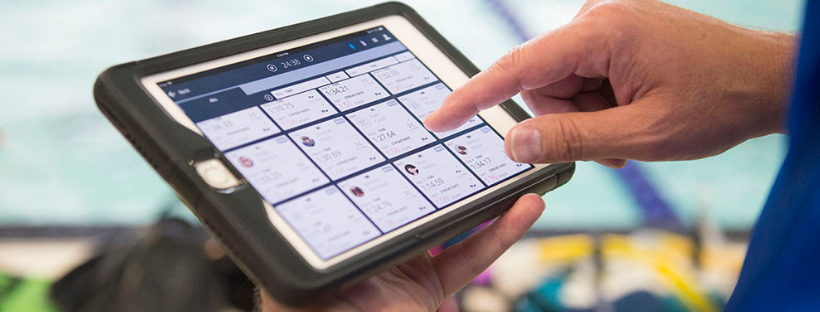
Finding the Best Swim Technology
Advancements in swimming technology in recent years have been phenomenal. And just as in any other sport, these technologies provide a significant advantage to athletes, coaches, and teams utilizing them to improve their swim season.
The rise in popularity of swimming technology brought about a wide range of gadgets to choose from, some adding more value to training than others. Here are some features to consider when looking for the best technology in swimming for improving performance.
1. Tracks essential swimming metrics
The first thing to look out for is swimming technology that measures performance comprehensively. There are a variety of factors that come into play before a swimmer clocks in their final times or splits. Tracking metrics such as distance per stroke, stroke rate, SWOLF, time underwater, etc. provide a deep look into the performance, and how the results came to be.
These metrics show exactly what is going on in the water, revealing areas of improvement for individual swimmers. This promotes fine-tuned workouts and makes it easier to provide swimmers with personalized feedback to suit their unique needs and goals.
Most of these metrics can be calculated manually. However, doing so would unnecessarily take up countless hours and brainpower, all of which could otherwise be dedicated to performing more productive tasks. Using technology such as a wearable swim tracker that automatically, and accurately, does this for you frees up time and improves the efficiency of swim practices.
2. Keeps a log of workouts and training/racing results. If it automatically captures workouts, even better
Another functionality to look out for, especially in swimming wearables, is the tech’s capabilities to automatically track workouts and accurately build out sets as they are swum. At a minimum, it should count laps and record distances. This way, coaches and athletes can easily keep track of the actual workout completed - modified workouts can be noted, and this dissuades athletes from cheating on their sets.
Even technology that doesn’t automatically capture workouts, such as electronic logbooks, are extremely valuable. Convenient access to a complete record of workouts and results allows for long-term tracking. With long-term tracking, you can monitor progress in training and competition.
Whether it’s in improving specific metrics or seeing faster times, athletes can celebrate all kinds of wins in achieving training and racing targets. In the long term, this improves athlete morale and motivation and teaches them to be accountable for their own success.
Tracking long term also provides a reliable gauge of the effectiveness of training plans. You can observe trends in performance and identify what has worked and resulted in improvements, so you can iterate on them in the future, as well as areas that need further improvement.
3. Provides training insights
Faster swimming starts with effective practices. The best swimming technology is one in which you can gain insights to implement better training plans. Coaches are constantly looking for ways to have better swim practices, and sometimes, all it takes for better coaching is the right technology.
The right kind of data provides invaluable insights that help identify specific areas of weaknesses that need to be focused on in practice. These can then be tested and tracked longer term, to ensure athletes are on track. If something isn’t working, the data will shed light on other avenues that can be pursued.
The best technology in swimming provides data that coaches and swimmers can act upon, so improvements can be continuous and effectively translated into faster swimming in training and races.


